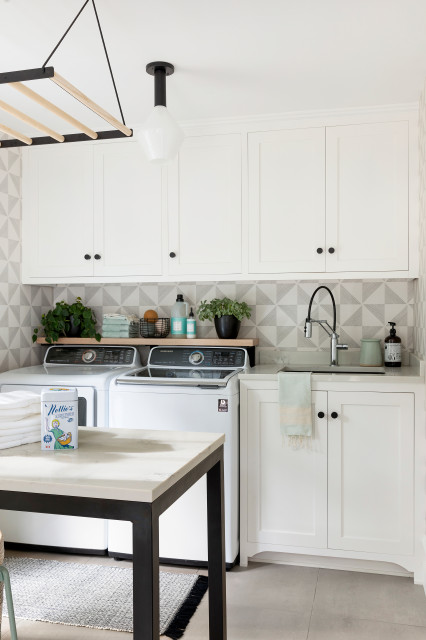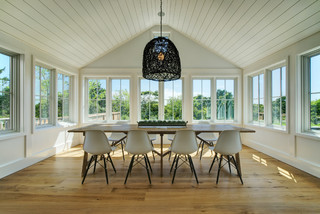Buying or selling real estate is perhaps the most complex transaction you’ll ever make.
That’s the cautionary adage some Maryland realtors tell prospective buyers and sellers. Hire us, they say, and we’ll advocate for you until the keys change hands.
How agents are compensated for that time and effort is the central focus of several changes coming Saturday to the National Association of Realtors. While denying any wrongdoing, the trade organization agreed to a sweeping overhaul of how it operates to settle a class-action lawsuit that alleged its policies and practices had artificially inflated commissions at the expense of sellers.
The settlement agreement ends the practice of posting compensation offers alongside properties on multiple listing services, and realtors must also sign a written compensation agreement with buyers before touring a home.
The Baltimore Banner thanks its sponsors. Become one.
Maryland has a law on the books requiring buyer agreements that disclose the specific amount or rate of compensation the real estate broker will receive. Even as realtor associations in the state say their fees have always been negotiable, the settlement has attracted fresh attention to the practice.
Here’s what Marylanders need to know.
Agent commissions add up
Agents representing both buyers and sellers have traditionally split a commission of 5-6% of the sales price, often paid by the seller. The Maryland Association of Realtors estimated the median sales price for a Maryland home was $430,000 in May, putting compensation around $21,000-$25,000 to be split between buyer and seller agents.
Some agents are concerned the policy changes will put more pressure on homebuyers to come up with financing for commissions, said Sarah Rayne, CEO of the Howard County Association of Realtors.
A home listed for sale on Multiple Listing Services will no longer include a blanket offer of “cooperative compensation,” in which the seller pays for a buyer agent’s commission. Buyers can still ask sellers during negotiations to pay for their agent’s fees.
The Baltimore Banner thanks its sponsors. Become one.
The practice of sellers’ agents splitting a commission with the buyers’ agents is known as cooperative compensation. The settlement agreement changes the way properties are advertised to no longer include a blanket offer of cooperative compensation to a prospective buyer’s agent when they advertise the property.
“They’re already kind of struggling to come up with a down payment, closing costs, all that money that you need to bring to the table in order to buy your first home,” Rayne said.
Rayne said first-time homebuyers are getting priced out of Howard County, a hot market where some starter homes are listed around $500,000 to $600,000. The lack of affordable inventory can contribute to a lot of competition for listings, she said.
If buyers are concerned about affording an agent, they may go into a transaction alone. They may have cost savings upfront, Rayne said, but they won’t have an advocate heading into financial negotiations later.
“They need somebody there who can help them work through this process,” she said.
The Baltimore Banner thanks its sponsors. Become one.
Figure out what you need
Not everyone is going to need an agent. That’s one of the tips Joanne Cleaver, a former real estate journalist and author of a book on negotiating realtor commissions, has learned over the years. The writer runs a Facebook group for buyers and sellers centered on negotiating how agents represent them.
For example, some property transactions require the help of a real estate attorney. If the attorney can handle the negotiations and transaction, perhaps an agent isn’t necessary, Cleaver said. Retaining a real estate lawyer could cost less than an agent commission in some cases.
First-time homebuyers or people searching for property in another state may prefer to work with an agent who has knowledge of a region or specific expertise. Experienced buyers and sellers also shouldn’t assume they can go it alone, Cleaver said.
That’s why it’s crucial for buyers to do research before hiring an agent.
“This is not ‘House Hunters,’” Cleaver said. People may think they need to move fast, but she cautions against signing a contract with an agent out of eagerness to buy a house.
The Baltimore Banner thanks its sponsors. Become one.
Sellers can also reduce the cost of commissions. Cleaver likes to ask agents what work they do beyond listing the home. Could some of that work, such as organizing an open house, be handled by the seller, Cleaver said.
When Cleaver was selling a home in Michigan, she found a discount agent who agreed to a flat fee of about $900 in exchange for listing the home. She reused old listing photos, wrote up the home description herself and timed the listing to go live on a Friday in hopes of catching the weekend house hunting crowd.
Within hours, Cleaver said, the agent forwarded an inquiry that resulted in an offer by the end of the day.
If an agent balks at a buyer or seller’s request to negotiate, Cleaver recommends not hiring them.
“Agents are really in a moment where they need to prove their value,” she said.
The Baltimore Banner thanks its sponsors. Become one.
Talk to more than one agent
Buyers and sellers should interview several agents before signing an agreement, said Cheryl Abrams Davis, president-elect of the Maryland Association of Realtors. The organization represents about 28,000 realtors.
“This is like anything else that you do in life when you go to a doctor or hire a tax preparer,” she said. “Those same questions you’re going to ask of them, you’re going to ask of your realtor.”
Abrams Davis recommends asking realtors about their negotiating experience, how long they have been in business, how many buyers they have worked with and how many houses they’ve sold. Reviews from other clients are important too, she said.
“The beauty of this process is that there are various options” for agent financing, Abrams Davis said. Some agents ask for a flat fee, and others set a percentage rate of the sales price.
The Maryland Association of Realtors puts out its own list of recommended questions for first-time homebuyers in choosing an agent. Association leadership said agent compensation must be specific, such as a percentage of sales price, a flat dollar amount or a combination of both. It cannot be open-ended.
“We are all about making sure there’s transparency about the process for all Marylanders and anyone moving into our state,” she said.



















What it is: More than any other style, traditional decorating embraces a sense of history, with heirloom-quality antiques, rich woods, plush carpets and pretty patterns. Although traditional style does tend to be formal, with symmetrical arrangements and refined materials, the ultimate goal is comfort, warmth and a welcoming feel.
Where it comes from: Traditional style traces its roots to 18th- and 19th-century Europe, although a general sense of honoring the past is more central to the style than a focus on any particular region of the world.
Good to know: At first glance it may be hard to distinguish between a traditional and transitional space (and it doesn’t help that the words are so similar), but it’s easier when you know what to look for. Simply put, traditional style adheres firmly to classic designs rooted in history, while transitional style draws from both traditional and contemporary looks.
Hallmarks of traditional style:
Antiques and new pieces with a timeless feelRefined color paletteClassic comforts such as a crackling fire on the hearth and floor-to-ceiling bookshelvesLuxurious materials like marble and rich woodsIntricate architectural details
This style works well with: Rustic, coastal, Mediterranean
Get the guide to traditional style